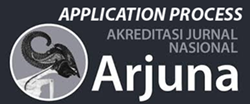Improving the drinking water supply system in the capital of Tomia Timur Subdistrict, Tomia Island, Wakatobi Regency
DOI:
https://doi.org/10.59653/jimat.v2i03.1031Keywords:
Optimization, SPAM IKK, East Tomia, WakatobiAbstract
This research aims to improve the Municipal Drinking Water Supply System (SPAM IKK) in East Tomia, Wakatobi Regency, using a combined method approach and involving 76 participants. The findings indicate that water services in East Tomia adhere to the 4K principles (Quantity, Quality, Continuity, and Accessibility), with an increase in water volume despite some distribution challenges. Water quality remains high due to regular testing, and continuous service is ensured through ongoing maintenance, making the service accessibility for the community. Strategic improvements over the next 5-10 years include the implementation of solar-powered pumps, expansion of storage infrastructure, and enhancement of the distribution system to improve efficiency and sustainability. Recommendations include infrastructure upgrades, adoption of green technology, consistent quality checks, and support from proactive local government policies.
Downloads
References
Brown, C. M., Lund, J. R., Cai, X., Reed, P. M., Zagona, E. A., Ostfeld, A., Hall, J., Characklis, G. W., Yu, W., & Brekke, L. (2015). The future of water resources systems analysis: Toward a scientific framework for sustainable water management. Water resources research, 51(8), 6110-6124.
Coelho, B., & Andrade-Campos, A. (2014). Efficiency achievement in water supply systems—A review. Renewable and Sustainable Energy Reviews, 30, 59-84.
Cosgrove, W. J., & Loucks, D. P. (2015). Water management: Current and future challenges and research directions. Water resources research, 51(6), 4823-4839.
Emenike, C., Tenebe, I., Omole, D., Ngene, B., Oniemayin, B., Maxwell, O., & Onoka, B. (2017). Accessing safe drinking water in sub-Saharan Africa: Issues and challenges in South–West Nigeria. Sustainable cities and society, 30, 263-272.
Exposto, L. A. S., Lino, M. N., Quim, J. A., Goncalves, M. J., & Vicente, H. P. (2021). Efforts To Improve Clean Water Quality To Support Community Health. KESANS: International Journal of Health and Science, 1(3), 236-251.
Frone, S. M., & Frone, D. F. (2013). Sustainable tourism and water supply and sanitation development in Romania. Journal of Tourism and Hospitality Management, 1(3), 140-153.
Gonzalez, C., & Carlevaro, F. (2015). Costing improved water supply systems for low-income communities: a practical manual. IWA Publishing.
Hoekstra, A. Y. (2019). The water footprint of modern consumer society. Routledge.
Howard, G., Bartram, J., Williams, A., Overbo, A., Geere, J.-A., & Organization, W. H. (2020). Domestic water quantity, service level and health. World Health Organization.
Kodoatie, R. J. (2003). Manajemen dan Rekayasa infrastruktur. Pustaka Pelajar.
Larsen, T. A., Hoffmann, S., Lüthi, C., Truffer, B., & Maurer, M. (2016). Emerging solutions to the water challenges of an urbanizing world. Science, 352(6288), 928-933.
Lee, K. F. (2001). Sustainable tourism destinations: the importance of cleaner production. Journal of Cleaner Production, 9(4), 313-323.
Novitasari, D. M. (2019). Analysis of Ngrowo River Quality as Impact of Wastewater Based on Chemical Physical Parameters in Sembung Village Tulungagung. IOP Conference Series: Materials Science and Engineering,
Pal, M., Ayele, Y., Hadush, M., Panigrahi, S., & Jadhav, V. (2018). Public health hazards due to unsafe drinking water. Air Water Borne Dis, 7(1000138), 2.
Roza, M., & Andriani, H. (2023). Implementation Analysis of the Pariaman City Regional Regulation No. 9 of 2015 concerning the Drinking Water Depot Business Permit. Journal of Indonesian Health Policy and Administration, 8(2), 72-78.
Sühring, N. (2021). Cultural and environmental aspects of drinking water supply and treatment: a case study using participatory action research in rural eastern Indonesia
Susanto, A., Amrina, U., Purwanto, P., Putro, E. K., Yochu, W. E., & Wilmot, J. C. (2020). Analysis of free residual chlorine in drinking water distribution systems in ore processing industry. Polish Journal of Environmental Studies, 29(6), 4321-4330.
Tortajada, C. (2020). Contributions of recycled wastewater to clean water and sanitation Sustainable Development Goals. NPJ Clean Water, 3(1), 22.
Wahyuni, M. R. (2017). Optimalisasi Pelayanan Air Bersih kota Gresik Berdasarkan Tingkat Pelayanan Terhadap Masyarakat Tesis. Surabaya: Institut Teknologi Sepuluh Nopember].
Zohrabi, M. (2013). Mixed method research: Instruments, validity, reliability and reporting findings. Theory and practice in language studies, 3(2), 254.
Downloads
Published
How to Cite
Issue
Section
Categories
License
Copyright (c) 2024 Sukardin, Nini Hasriyani Aswad, Abdul Kadir

This work is licensed under a Creative Commons Attribution-ShareAlike 4.0 International License.
Authors who publish with this journal agree to the following terms:
- Authors retain copyright and grant the journal right of first publication with the work simultaneously licensed under a Creative Commons Attribution-ShareAlike that allows others to share the work with an acknowledgement of the work's authorship and initial publication in this journal.
- Authors are able to enter into separate, additional contractual arrangements for the non-exclusive distribution of the journal's published version of the work (e.g., post it to an institutional repository or publish it in a book), with an acknowledgement of its initial publication in this journal.
- Authors are permitted and encouraged to post their work online (e.g., in institutional repositories or on their website) prior to and during the submission process, as it can lead to productive exchanges, as well as earlier and greater citation of published work (See The Effect of Open Access).























